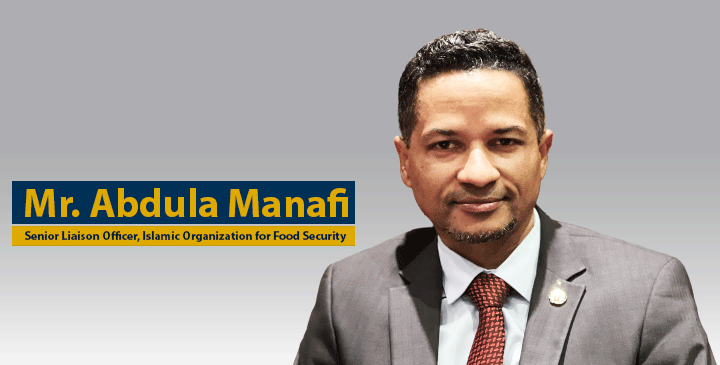By: Prof. Abdul Shakoor Shah
Body language refers to the non-verbal cues used to communicate. These non-verbal cues are a huge part of our daily communication. In fact, body language can be between 60% and 65% of all communication. Body language helps us understand each other and gives us information about how people are feeling in a given situation. Body language is also used to convey emotions or intentions. Along with body language, it is important to pay attention to other cues such as context. In many cases, you have to look at the signals as a group rather than focusing on a single process. Think for a moment how much a person can express with just facial expressions. A smile can indicate approval or happiness. In some cases, our facial expressions can reveal our true feelings about a particular situation. When you say you’re feeling fine, your facial expression can tell people otherwise. Just a few examples of emotions that can be expressed through facial expressions include happiness; these include sadness, anger, surprise, disgust, fear, confusion, excitement, desire, and contempt, etc. A person’s facial expressions can also help determine whether to trust that person’s words and personality.
A number of interesting findings have emerged in Janiwali’s research. A study found that the most reliable facial expressions include a slight rise of the eyebrows and a slight smile. Researchers suggest that this expression conveys both friendship and trust. Facial expressions are also among the most universal forms of body language. The expressions used to express fear, anger; sadness and happiness are almost the same all over the world. Researcher Paul Ekman has shown the universality of different facial types. What is revealed? Research even suggests that we make judgments about people’s intelligence based on their faces and expressions. One study found that people with narrower faces and more prominent noses are considered more intelligent. . Smiling, happy people are considered more intelligent than those with angry expressions. Eyes are often called the “windows to the soul” because they have the ability to reveal so much about someone. What the person is thinking or feeling. When you engage in a conversation with another person, noticing eye movements is a natural and important part of the communication process. Some common things you might notice are: These can include whether people are making direct eye contact or holding their gaze, how often they blink, etc. When someone looks you directly in the eye during a conversation, it shows that he is interested and paying attention, but prolonged eye contact can convey a threat or negative message. On the other hand, breaking eye contact and looking away repeatedly can indicate that the person is worried, anxious, or trying to hide their true feelings.
Blinking is natural, but you should also pay attention to whether someone is blinking too much or too little. Usually when people feel very worried or anxious they blink rapidly. Occasional blinking may indicate that a person is deliberately trying to control their eye movements. The size of the dark circle in the eye is a very subtle non-verbal communication. The signal may be the level of light in the environment that controls the spread of this circle; sometimes emotions can also cause small changes in the size of this circle. Mouth expressions and movements are also important in reading body language. For example, chewing on the bottom lip may indicate that the person is experiencing feelings of worry, fear, or insecurity. Covering the mouth may be an attempt to be polite if the person yawns or coughs. Be it, but It can also be an attempt to hide disapproval. Smiling is probably one of the biggest body language signals, but a smile can be interpreted in many ways. A smile can be genuine, or it can be used to fake happiness Can be done for sarcasm, or even sarcasm. When evaluating body language, the following mouth and lip gestures should be noted. Pursed lips can be a sign of disapproval or mistrust, while people sometimes bite their lips when they are upset, anxious, or stressed. When people want to hide an emotional reaction, they may cover their mouths to avoid showing smiles or giggles in an attempt to hide it. Light in the mouth C changes can also be subtle indicators of what a person is feeling. When the mouth is slightly up, it can mean that the person is feeling happy or optimistic. On the other hand, a slightly downcast mouth can be a sign of sadness, disapproval, or even outright mistrust. Waving, pointing, and using fingers to indicate numerical quantities are all very common and easy to understand gestures. However, some gestures can be cultural, so in another country, giving thumbs up or giving the peace sign Can have a completely different meaning than in the US. A clenched fist can indicate anger in some situations or solidarity in others. Thumbs up and thumbs down often indicate approval and disapproval. The “okay” gesture is made by touching the thumb and forefinger in a circle while extending the other three fingers to mean “okay” or “it’s okay,” except in parts of Europe. I use this signal to show that you are nothing. In some South American countries, this symbol is actually considered a rude gesture. The V sign made by raising the index and middle fingers and separating them to form a V-shape, means peace or victory in some countries, while in Britain and Australia the symbol now takes on an aggressive meaning. When the back of the hand is facing outwards, arms and legs conveying non-verbal information I can also be useful.
Crossing the arms can indicate defensiveness. Crossing one’s legs with another person can indicate dislike or discomfort with that person. Other subtle gestures such as spreading the arms wide can be an attempt to appear larger or more commanding, while keeping the arms close to the body itself. There may be an attempt to minimize or distract. When you are evaluating body language, pay attention to some of the following signals that the arms and legs may give: crossed arms can indicate that a person feels defensive, self-protective or closed off. Standing with hands on hips can be a sign that a person is ready and in control, or that could also possibly be a sign of aggression. Clasping hands behind the back can indicate that a person is feeling bored, anxious, or even angry. Rapid tapping or fidgeting of the fingers can be a sign that a person is bored, impatient, or frustrated. Crossed legs can indicate that someone is feeling closed off or in need of privacy. How we hold our bodies can also serve as an important part of body language. Sitting up straight, for example, can indicate that a person is concentrating while, on the other hand, sitting with the body forward can indicate that the person is bored or indifferent. When you’re trying to read body language, try to look for some of these signals. An open trunk indicates friendliness, openness, and willingness; while in contrast, the trunk is often hidden by leaning forward and crossing the arms and legs to convey communication. Have you ever heard someone refer to their need for personal space? Do you ever start to feel uncomfortable when someone stands too close to you? The term proxemics, coined by anthropologist Edward T. Hall, refers to the distance between people when they interact. Just as body movements and facial expressions can communicate a great deal of non-verbal information.
The writer is a freelance columnist. He can be reached at [email protected]






